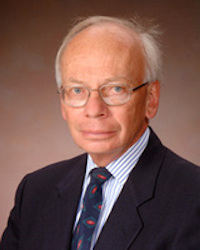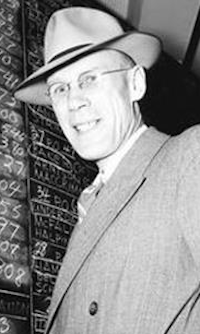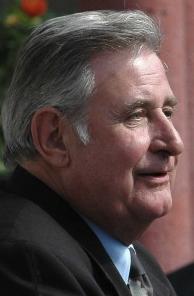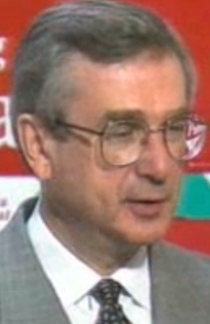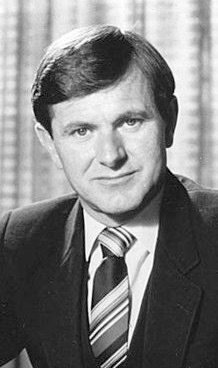The decision by the University of Alberta Senate to grant environmentalist, scientist and broadcaster David Suzuki an honorary degree has the university community tied in knots. University President David Turpin responded to criticism with an open letter today, but criticism from Dean of Business Joseph Doucet and Dean of Engineering Fraser Forbes gives the impression of an open revolt (or at least an attempt to appease unhappy donors from the oil and gas sector).

But the Suzuki controversy of 2018 is nothing compared to the slight created when the Senate refused to grant an honorary degree to Alberta Premier William Aberhart in 1941.
What should have been a routine exercise erupted into a full blown controversy in 1941 when members of the University Senate voted against granting Aberhart an honorary degree after he had already been informally notified of the honour by University President William Kerr.
A Senate committee’s recommendation that Aberhart be given an honorary degree was rebuked with one week left until convocation.
Until that point in history, three of Aberhart’s predecessors, Alexander Rutherford, Arthur Sifton, and John Brownlee, had received honorary degrees from the University during their time as elected officials.
The committee’s recommendations were said to be based on Aberhart’s record as an educator and his role in reforming the school system, including certifying teachers into a professional class and introducing a teachers’ pension system.
But it would have been hard for members of the Senate to ignore the rest of Aberhart’s record as Premier.
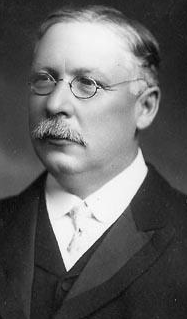
During its first decade in government, Aberhart’s Social Credit Party implemented a radical agenda that followed a fringe economic theory created by Major C.H. Douglas, tried to print its own currency, legislate control over the media, nationalize the banking system and ban alcohol sales. It is also well known that many early Social Credit MLAs harboured deep anti-semitic and racist attitudes rooted in the belief of a global banking conspiracy.
It was a strange time in Alberta’s political history.
Scrambling to deal with the huge political problem the rejection might cause the University, the Senate quickly passed a motion that no honorary degrees would be granted that year. It was possibly, “the first time in the university’s history that no address will be given at convocation,” an Edmonton Journal report speculated on May 14, 1941.
Presiding over that year’s convocation on May 19, 1941 at McDougall Church was University Chancellor Alexander Rutherford, who had served as Alberta’s first premier from 1905 until he was forced out of office by a railway scandal in 1910. President Kerr resigned the following day.
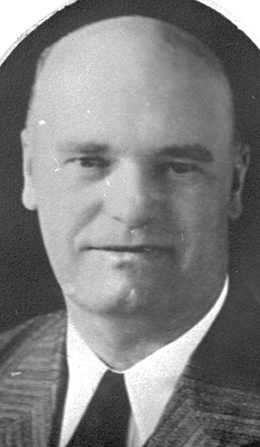
An editorial published in the Edmonton Bulletin on May 14, 1941 stated that “…there is an affront to dignity of the University in this sorry affair. There is an affront to Dr. Kerr who was unwittingly made the instrument of what could only have been a calculated insult to Alberta’s self-respect. There is an affront to the the people of Alberta who are made ridiculous throughout Canada.”
Aberhart responded to the slight the next year by introducing Bill 57: An Act to amend and consolidate The University Act, which reorganized university governance and stripped the Senate of much of its powers, with the exception of its responsibility of selecting honorary degree recipients.
“The citizens of Alberta are now looking to the legislature to see to it that never again will it be possible for the senate of the University of Alberta to present a display as petty, so childish, so humiliating,” said Medicine Hat Social Credit MLA John Robinson told the Bulletin on Feb. 3, 1942.
The University Senate’s behaviour was “political prostitution,” Robinson told the Calgary Herald on Feb. 4, 1942.
Reportedly expressing pain at at Aberhart’s failure to obtain an honorary degree from the U of A, Willingdon Social Credit MLA William Tomyn told the Herald on Feb 3, 1942 that “never in the history of any nation was there a greater scandal.”
(Note: Most of the historical material included in this post was found in Walter H. Johns’ excellent book A History of the University of Alberta 1908-1969, and through the Alberta Legislature Library Scrapbook Hansard and the Google Newspaper Archive).



